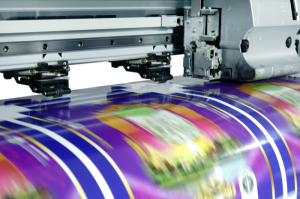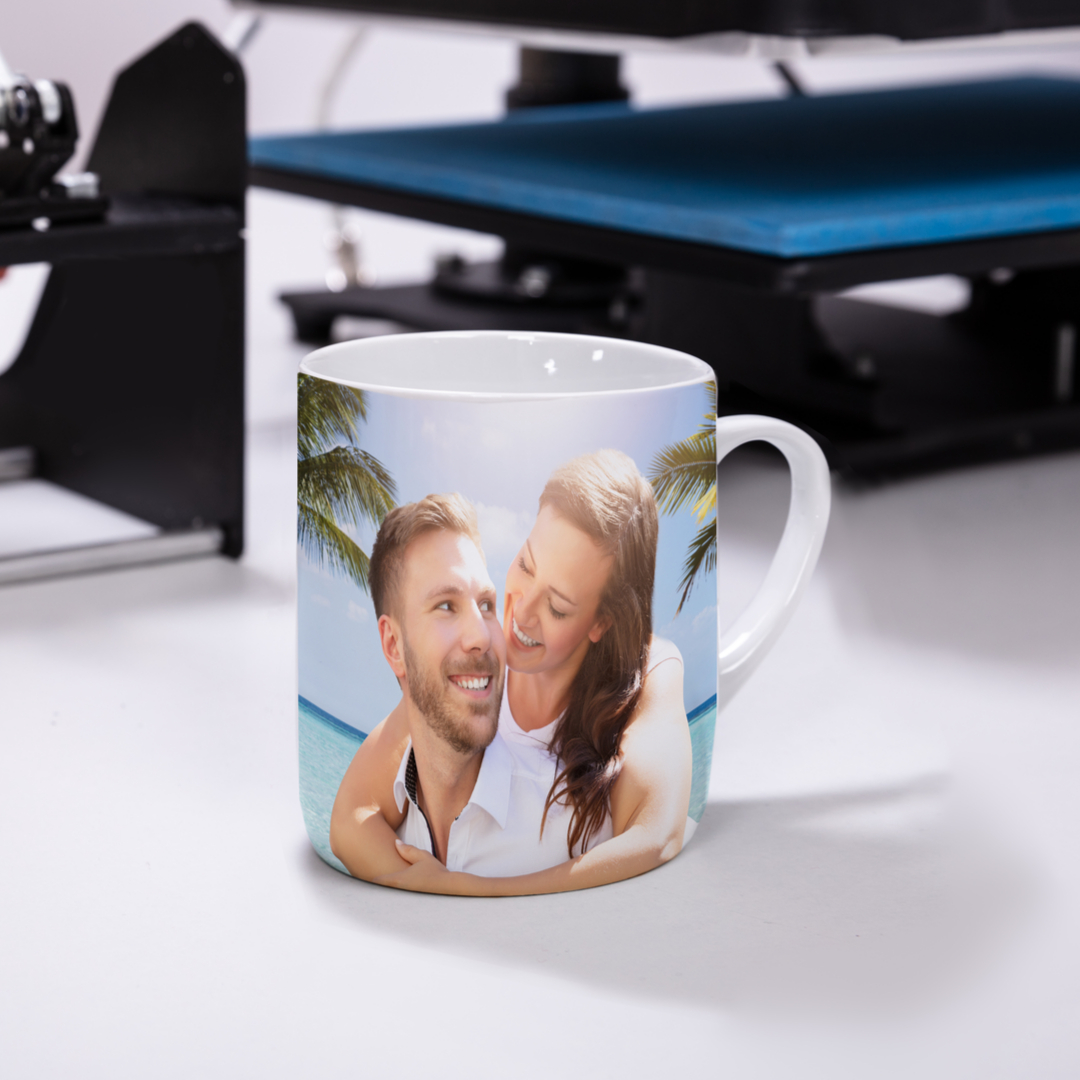Digital printing has taken the printing game to new heights, making it possible to accomplish printing magic on different materials. Direct print and dye sublimation are two very different but very effective methods of digital printing.
How do the two printing methods differ? What are the advantages and disadvantages of each? Which printing method is best suited for your printing needs? Don’t worry – Ironmark’s print experts and top-notch creative team have the answers you’re looking for.
What Is Direct Printing?
Direct printing is a process involving the use of large-format ink-jet printing machines that contain several fine nozzles, which squirt tiny droplets of ink onto rolls of pre-treated fabric and textiles. The fabric pretreatment aids in bonding the print to the fibers, and later, the fabric is post-treated using high heat pressing to fix the dye into the fabric. In essence, direct printing uses a digital printer to digitize an image which is then printed directly onto textiles and fabrics.
When Is Direct Printing Best Used?
The natural and nylon markets are known for using direct printing. You can print on substrates that can lay flat, including hats, t-shirts, sleeves, canvas bags, pillowcases, and shoes. If you’re looking to acquire custom clothing for your employees and customers (like branded t-shirts), direct printing is the way to go.
Related: 90-Second Spotlight on Promotional Products with Karen Ward
Pros and Cons of Direct Printing
Pros
Direct printing processes can accommodate larger, seamless backdrops or fewer seams on an extra-large backdrop, given that the printing process facilitates printing onto materials up to 16 feet in width. These processes are quick and relatively easy – the image or design is loaded into a specific print software and then sent to the printer to be transferred onto the textile or fabric.
Direct digital fabric printing makes it possible to get multiple colorways and designs produced along or within one roll of textile or fabric. This allows for quick turnaround time, small run sampling, reprints or reorders, rush orders, and printing large runs and placement, as well as engineered designs.
Direct printing easily supports complicated artwork, full-color photographs, and high-color-count art. If you’re looking to get a complex design printed, and want high-quality results, request that your job be done with direct printing.
Related: Print Vendor Management Best Practices
Cons
- With direct printing, the image definition is sometimes less clear and sharp, compared to other digital fabric printing methods, like dye sublimation, which could be the result of a combination of factors such as ink type, the texture of the fabric or textile itself, pre-treating agent, and even temperature.
- Aftercare and maintenance of the fabric or textile can be challenging since over time, the quality of the print on the fabric can diminish as a result of over-washing and wear, which means that particular care will need to be taken to keep the print vibrant and long-lasting.
- Direct printing is expensive, with the ink, equipment, and maintenance and R&D being costly. A 600ml ink cartridge, for example, can go for $207.00 which amounts to $.35/ml.
What Is Dye Sublimation?
Dye sublimation is a printing process that involves the use of special heat-transfer paper to transfer the print onto polyester fabrics and polyester resin-coated products utilizing heat and pressure. A digital printer is used to produce the transfer paper and the ink is heated to the point where it boils, converting it from a solid to a gas, etching the image or design into the fabric. This process is most effective on 100% polyester. You can print on hard or soft substrates, including bags, blankets, mugs, keychains, socks, ornaments, snowboards, clocks, apparel, soft signage, and customized ceramic tiles.
Related: Your Survival Guide to Promotional Planning in 2022
When Is Dye Sublimation Best Used?
Dye sublimation is best used for smaller orders, such as a small batch or one-off order of products like keychains or mugs. For example, if you’re preparing promotional products for a major event, or need a quick custom order of gifts for business associates, dye sublimation is the way to go.
CTA: Watch Our Webinar on Corporate Gift Giving
Pros and Cons of Dye Sublimation
Pros
Dye sublimation offers a continuous tone, which is made possible because, with this printing method, each dot of ink can be a different color, allowing for high-resolution images and incredible color fidelity.
With dye sublimation printing, the ink dries instantaneously, allowing you to use the print item immediately after printing and not have any concerns about smearing the ink. Dye sublimation offers fade-free print, with high-quality and permanent colors that are embedded in the substrate and not on the surface, which allows you to do multiple washes as the images remain unfaded. Please note that dye sublimation is limited to plastic substrates, like polyester materials. Dye sublimation is not suitable for applications with natural fibers, such as cotton, unless they are pretreated with a polymer coating before printing.
Since dye sublimation uses simple press machines, there are fewer moving parts over the print media during the printing process. There is no back-and-forth action by the thermal print head, for example. The result is fewer breaks and less maintenance work to tackle ink spillage and clean-up.
- Dye sublimation offers fade-free print, with high-quality and permanent colors that are embedded in the fabric or substrate and not on the surface, which allows you to do multiple washes as the images remain unfaded.
- If you have a small batch, or one-off orders, dye sublimation is ideal for making quick work of customizing and printing your most intricate designs.
Cons
- Dye sublimation can only be printed onto fabric up to 10 feet wide, which would require seams for bigger print jobs.
- Dye sublimation is limited to plastic substrates, like polyester materials. Dye sublimation is not suitable for applications with natural fibers, such as cotton, unless they are pretreated with a polymer coating before printing.
- Dye sublimation requires specially formulated inks that won’t convert to liquid and specialty printers that are compatible with these specialized ink cartridges, which means that this printing method is not the most cost-effective option, especially for large quantities.
- Dye printing is a slow and laborious printing process that cannot fire off prints in rapid succession, but presses each item individually and requires the additional step of printing the transfer paper.
Direct printing and dye sublimation are useful in their own right, providing different advantages as printing methods for your fabrics, textiles, and other substrates. You can achieve high-quality prints for stunning images with these two printing methods. It’s about choosing the right printing method for your particular needs. For help with all of your commercial printing needs, give a call to the experts at Ironmark. We have a wide variety of presses and offerings to help with your next print project.






